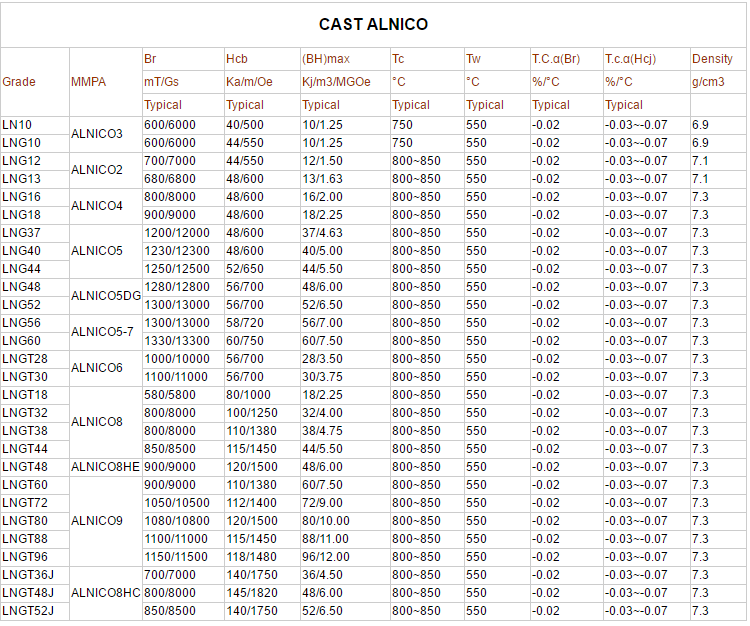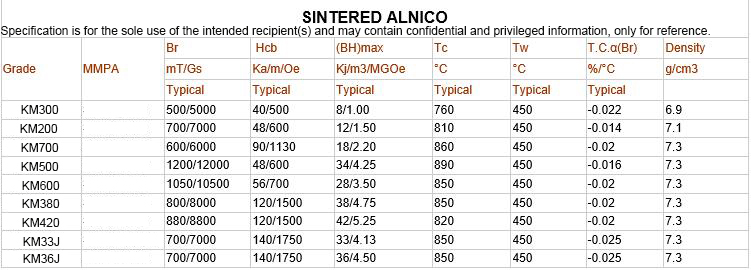What is alnico magnet
Alnico is an acronym referring to a family of iron alloys which in addition to iron are composed primarily of aluminium (Al), nickel (Ni) and cobalt (Co), hence al-ni-co. They also include copper, and sometimes titanium. Alnico alloys are ferromagnetic, with a high coercivity (resistance to loss of magnetism) and are used to make permanent magnets. Before the development of rare earth magnets in the 1970s, they were the strongest type of magnet. Other trade names for alloys in this family are: Alni, Alcomax, Hycomax, Columax, and Ticonal.
The composition of alnico alloys is typically 8–12% Al, 15–26% Ni, 5–24% Co, up to 6% Cu, up to 1% Ti, and the balance is Fe. The development of alnico began in 1931, when T. Mishima in Japan discovered that an alloy of iron, nickel, and aluminum had a coercivity of 400 oersted (Oe; 32 kA/m), double that of the best magnet steels of the time.
Alnico alloys have some of the highest Curie temperatures of any magnetic material, around 800 °C (1,470 °F), although the maximal working temperature is normally limited to around 538 °C (1,000 °F).[4] They are the only magnets that have useful magnetism even when heated red-hot. This property, as well as its brittleness and high melting point, is the result of the strong tendency toward order due to intermetallic bonding between aluminium and other constituents. They are also one of the most stable magnets if they are handled properly. Alnico magnets are electrically conductive, unlike ceramic magnets.
| Magnetic materials | Density (g/cm) | Maximal energy product BHmax(MG·Oe) | Residual induction Br(G) | Coercive force Hc(Oe) | Intrinsic coercive force Hc(Oe) | Normal maximal operating temperature |
|---|---|---|---|---|---|---|
| Alnico 5 (cast) | 7.3 | 5.5 | 12800 | 640 | 640 | 975 °F (524 °C) |
| Alnico 8 (cast) | 7.3 | 5.3 | 8200 | 1650 | 1860 | 1,020 °F (549 °C) |
| Alnico 5 (sintered) | 6.9 | 3.9 | 10900 | 620 | 630 | 975 °F (524 °C) |
| Alnico 8 (sintered) | 7.0 | 4.0 | 7400 | 1500 | 1690 | 1,020 °F (549 °C) |
As of 2008, Alnico magnets cost about 44 USD/kg (20 USD/lb) or 4.30 USD/BHmax
Alnico magnet Specification

